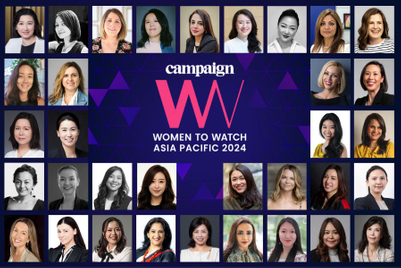Growing ambivalence with a lack of action
While it’s certainly progress that more conversations on gender diversity are taking place, Astrid Tuminez, Southeast Asia regional director for corporate, legal and external affairs at Microsoft, said there is concern over too much discussion and not enough action.
“The discourse is there and the programmes are even there,” she said. “Where the eyes glaze over is with the failure of walking the talk.”
But in Asia at least, said Ian Pearman, president of TBWA\Asia, the discourse remains constructive, unlike in the UK and US where it has become “very aggressive”.
“It’s very polemic, but there’s a massive absence of policy,” he said. “Asia seems to progress best when it jumps generations, when it doesn’t follow the classic, linear Western path. We hack our growth here, and it would be lovely if we could ‘hack’ our diversity objective as well.”
As an example, Pearman said this might mean replacing the word diversity “and all the baggage that comes with it”.
Culture is where it all begins
Before getting into the boardroom, gender diversity must be ingrained culturally, and Maneesh Sah, regional marketing head APAC and MEA at Aon, said APAC’s huge spectrum of cultures should help move it forward.
“Cultural competence for Asians comes very naturally, and it can be nurtured into a strong foundation for diversity and inclusion,” he said. “We need to do more as business leaders to build on these foundations.”
However, without the right support, culture can work against women, said Akira Mitsumasu, vice president of marketing and strategy research for Asia and Oceania at Japan Airlines.
He pointed to Japanese culture, which historically has not been progressive for women, and has taken significant government intervention to start to change. The government now gives awards for companies that have made clear strides to encourage women to stay in the workplace, he said.
“We have to provide an environment where it’s easy for women to continue to work,” he said.
Easy to “cook the books” on diversity targets
Helen Duffy, partner at Grace Blue, said targets are still required to advance gender diversity, as so little progress has been made to date.
“Unless you set a target, do it in the right way, and watch it in the right way, it will never change,” she said.
Mitsumasu agreed that having targets “means you actually have something to monitor”. But there is a developing issue around the authenticity of some of the reporting companies do around gender diversity targets.
While it may be possible to hit a numerical target—such as 30 percent of management positions being filled by women—whether this is done in a manner that actually helps those women progress and isn’t a box-ticking exercise is a different matter.
“It’s quite easy to cook the books,” said Pearman. “You can game the system by changing the inputs,” which creates a vicious cycle that foments a lack of trust in a company’s sincerity around tackling gender diversity.
“That’s what can be really dicey about targets,” Duffy added. “Nobody wants to be tokenistic, but unless we do have them, we will turn around in five years and nothing will have changed.”
Women don’t always advocate for each other
For all the much-needed talk around men needing to change their mindset, Klara Krok-Paszkowska, APAC head of strategy at WPP’s Joule, said women need to help each other more.
“That cultural progression has to come from women as well as men,” she said. “I don’t think women always help or support each other to get into those higher positions. They often have to act as forthright, aggressive males to get ahead.”
Kate Hegarty, corporate communications and CSR professional at Mastercard, said a key part of this is a “systemic issue of talking about women’s issues with only women in the room”.
“There’s a dearth of involving everyone in the conversation, which is a really big miss,” she said. “How are we going to progress if everyone isn’t involved?”
Men must be brought along in the conversation because, rather than always actively seeking to undermine women, they can be simply oblivious to the issues they are facing, said Brenda Chung, global group account director at Grey.
“I always encourage my colleagues, male and female, to speak up when they are facing these problems, and make suggestions, she said. “Because then you can help someone see another side.”













































.jpg&h=334&w=500&q=100&v=20250320&c=1)
.jpg&h=334&w=500&q=100&v=20250320&c=1)
.jpg&h=334&w=500&q=100&v=20250320&c=1)



.jpg&h=334&w=500&q=100&v=20250320&c=1)
.jpg&h=334&w=500&q=100&v=20250320&c=1)





.jpg&h=268&w=401&q=100&v=20250320&c=1)
.png&h=268&w=401&q=100&v=20250320&c=1)
.jpg&h=268&w=401&q=100&v=20250320&c=1)
